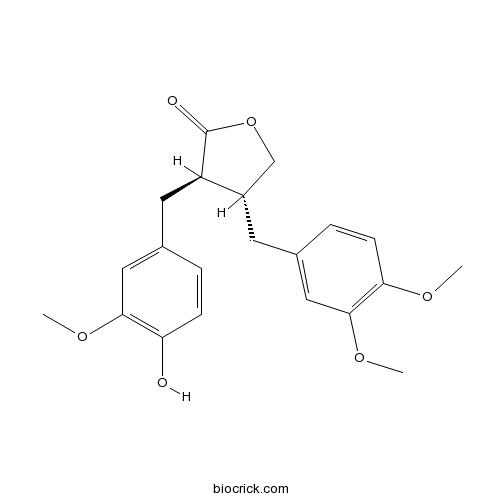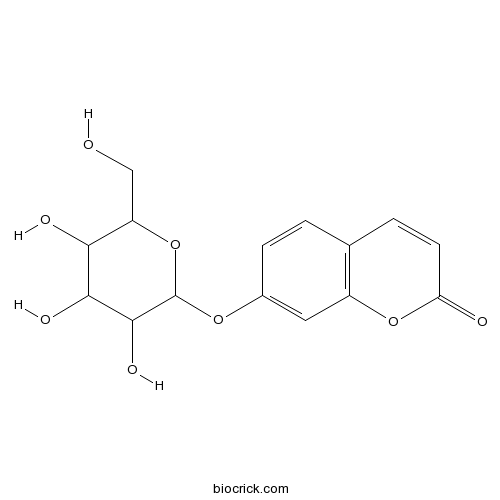Chamaecyparis obtusa
Chamaecyparis obtusa
1. The products in our compound library are selected from thousands of unique natural products; 2. It has the characteristics of diverse structure, diverse sources and wide coverage of activities; 3. Provide information on the activity of products from major journals, patents and research reports around the world, providing theoretical direction and research basis for further research and screening; 4. Free combination according to the type, source, target and disease of natural product; 5. The compound powder is placed in a covered tube and then discharged into a 10 x 10 cryostat; 6. Transport in ice pack or dry ice pack. Please store it at -20 °C as soon as possible after receiving the product, and use it as soon as possible after opening.
Natural products/compounds from Chamaecyparis obtusa
- Cat.No. Product Name CAS Number COA
-
BCN6291
Arctigenin7770-78-7
Instructions

-
BCN4479
Skimmin93-39-0
Instructions

Effect of microencapsulated essential oil form Chamaecyparis obtusa on monocyte-derived dendritic cell activation and CD4+ T cell polarization.[Pubmed: 30052657]
The essential oil of Chamaecyparis obtusa (C. obtusa), which is used in soap, toothpaste, and aromatic agents, has been known to have anti-inflammatory properties. In this study, we investigated the effects of microencapsulated C. obtusa essential oil on airborne fungus-induced dendritic cell (DC) activation and Th immune responses. We stimulated monocyte-derived DCs with Alternaria alternate and lipopolysaccharide (LPS). To determine the anti-inflammatory effects, we pre-treated DCs with various concentrations of microencapsulated C. obtusa essential oil and collected the supernatants to measure interleukin-6 (IL-6) and tumor necrosis factor-alpha (TNF-α), and we determined the expression of cell surface molecules. The effects of the essential oil on CD4+ T cells polarization was determine by culturing stimulated DCs and autologous CD4+ T cells. Alternaria enhanced the production of IL-6 and TNF-α from DCs, and pretreating DCs with 0.001, 0.01, and 0.05% of the essential oil significantly inhibited their production. Increased CD80 and CD86 expression by Alternaria was significantly inhibited with 0.05% of the essential oil. Alternaria-induced IL-5, IL-10, and interferon-gamma from CD4+ T cells were significantly inhibited with C. obtusa essential oil in a dose dependent manner. C. obtusa influenced both Alternaria- and LPS-induced Th1 and Th2 polarization of CD4+ T cells. These results suggest a novel pharmacological use for C. obtusa essential oil to treat inflammatory airway diseases.
Leachate from fine root litter is more acidic than leaf litter leachate: A 2.5-year laboratory incubation.[Pubmed: 30021175]
Some tree species increase fine root production under soil acidification, thus changing the balance of litter input from leaves and roots. Litter leaches a significant amount of acidic materials during its decomposition, which might facilitate soil acidification. In this context, we focused on dissolved organic matter (DOM) as the major component of acidic materials. We hypothesized that both the quality and quantity of DOM, which control its function (i.e., proton supply), differ between leaf and root litter. To test this hypothesis, we conducted a 2.5-year laboratory incubation experiment using fresh fine roots and fresh green leaves as litter of two coniferous species (Cryptomeria japonica and Chamaecyparis obtusa) and investigated the leachate pH and DOM composition based on the optical properties. After the early stage of decomposition when flash leaching of DOM converged, the amount of dissolved organic carbon (DOC) leached from roots increased again and leachate pH declined. In contrast, DOC concentrations continued to decrease in leaf leachates during the incubation period, and the pH decrease was not as striking as that of root leachates. Optical properties (ultraviolet visible absorption and fluorescence) of DOM revealed that humic-like substances in DOM played a central role in the acidic pH of root leachates. The total amount of protons released from roots of C. japonica and C. obtusa is about 13 and 18 times higher, respectively, than that from leaves. These results imply that the increase of fine root biomass may induce a positive plant-soil feedback in acidic soils, affecting soil biogeochemical functions of terrestrial ecosystems.
Electron microscopic observations of stomata, epicuticular waxes, and papillae in Chamaecyparis obtusa: Reconsidering the traditional concept of Y-shaped white stomatal bands.[Pubmed: 29624793]
The foliar morphological characters of hinoki (Chamaecyparis obtusa) were revisited using optical and scanning electron microscopy. In C. obtusa, typical Y-shaped white stomatal bands were evident on the abaxial leaf surfaces. Two facial leaves and two lateral leaves were observed at the same node. Waxy papillae and oval stomata were arranged in two or three rows with protuberant rims on the abaxial leaf surfaces. Higher magnifications revealed the deposition of epicuticular waxes (tubules) on the Y-shaped white stomatal bands. Given the absence of stomatal bands after dewaxing with organic solvents, the white stomatal bands in C. obtusa were related to the epicuticular waxes rather than the presence of aggregated stomata alone. In contrast to C. obtusa, a single median leaf and two lateral leaves were observed at the same node of oriental arborvitae (Platycladus koraiensis). Neither stomatal bands nor papillae were observed on P. koraiensis leaves. The stomatal density and epicuticular waxes in the stomatal regions of C. obtusa were higher than those of P. koraiensis. This study suggests that the traditional concept of Y-shaped white stomatal bands in C. obtusa should be revised to describe the arrangement of the aggregated waxy stomata that occur in rows.


